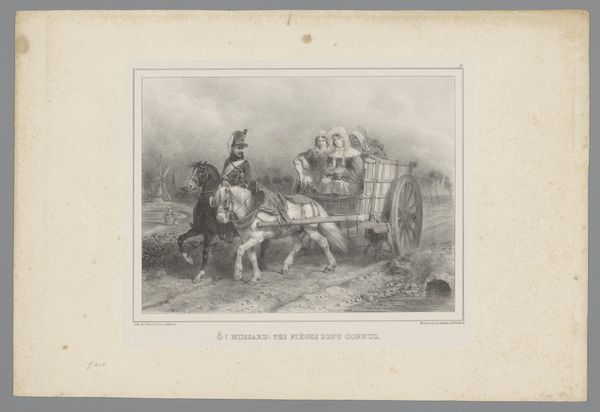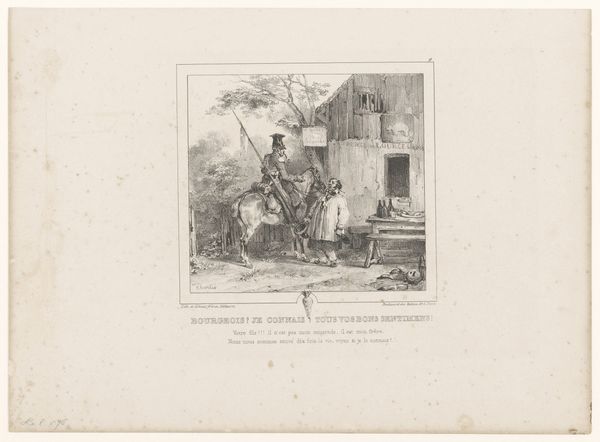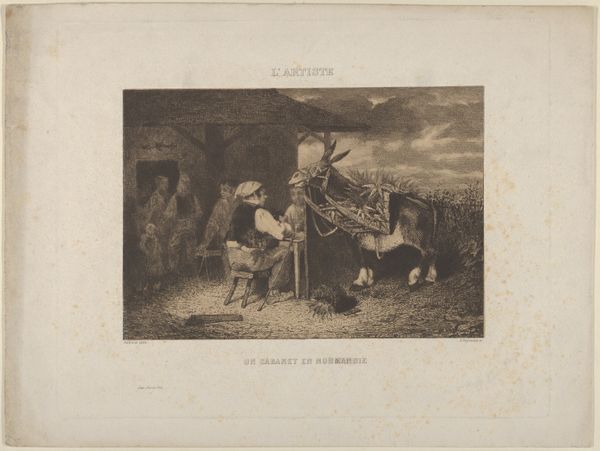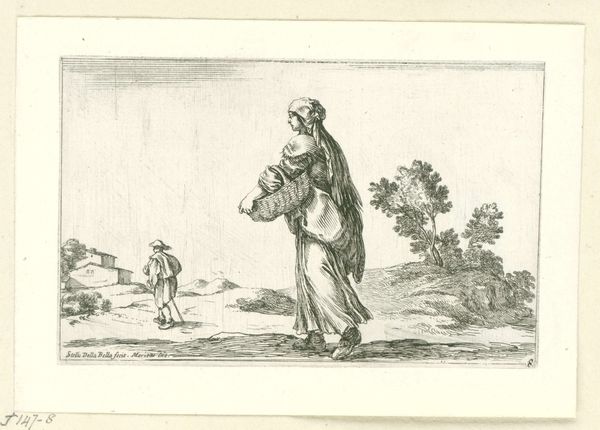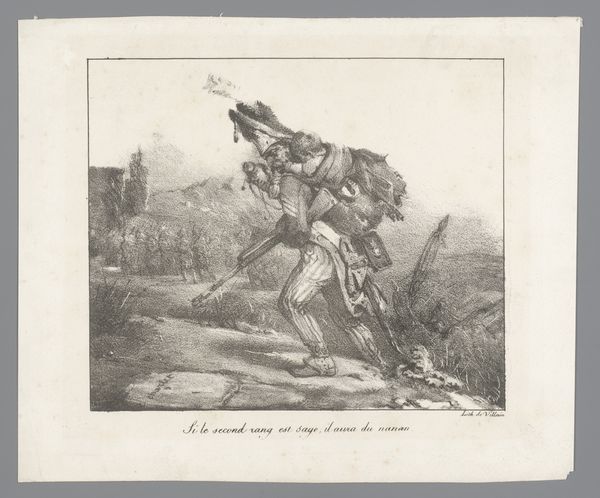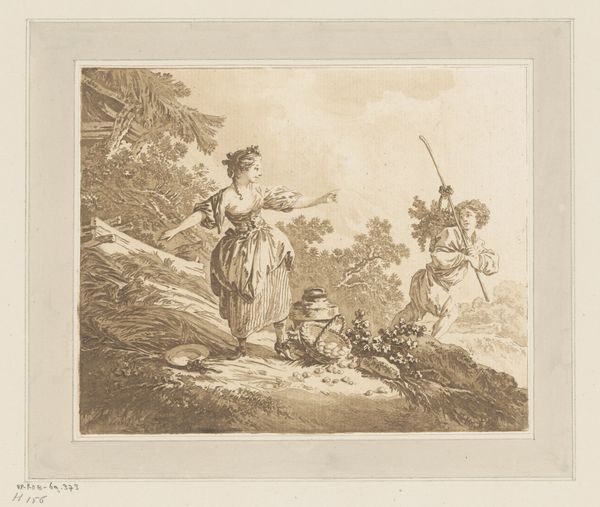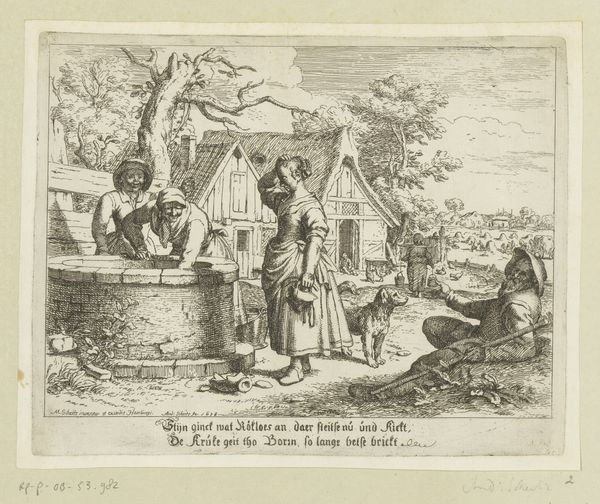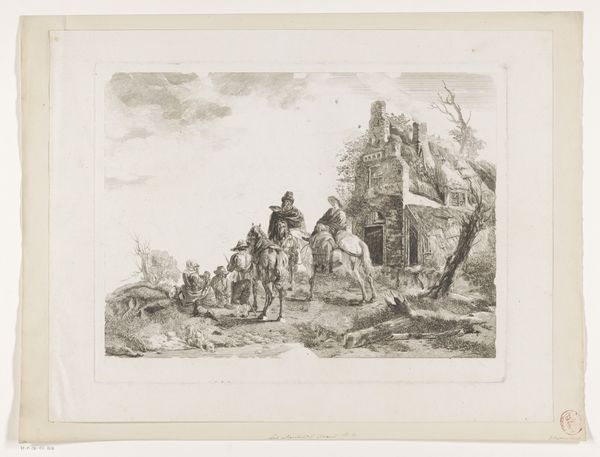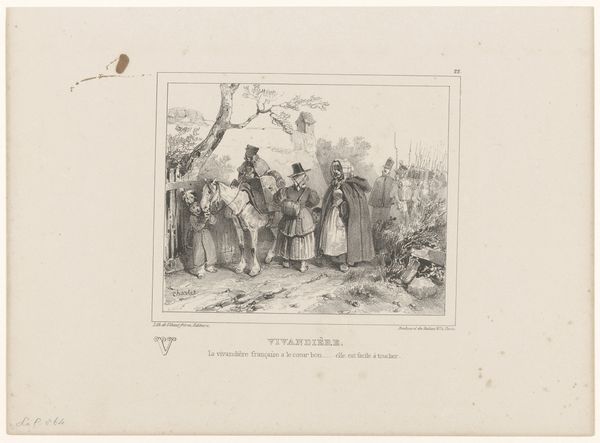
Een moeder en drie kinderen komen terug van het sprokkelen van hout 1841 - 1850
0:00
0:00
print, engraving
#
narrative-art
# print
#
landscape
#
figuration
#
romanticism
#
genre-painting
#
engraving
Dimensions: height 253 mm, width 322 mm
Copyright: Rijks Museum: Open Domain
Editor: So, here we have "A Mother and Three Children Returning from Gathering Wood," a print made by Charles Louis Mozin sometime between 1841 and 1850. There’s a real feeling of toil in this image, a weariness etched in the landscape and the figures. What do you make of it? Curator: It feels like stepping into a story, doesn’t it? Mozin really captures a moment, not just a pretty view. What strikes me is how he uses light. See how it softens the burden of the wood the mother carries, almost turning labor into something… almost luminous? Editor: Luminous? It's a pretty grey scene though. Curator: Exactly! And isn't that the magic of it? It’s grey, it’s likely cold, and the wood is heavy – but there’s a resilience there. A sort of quiet dignity. Do you think that quietness changes the feeling of the landscape? Editor: I think it does, it seems bleaker and harsher than the average romantic painting. Curator: Exactly. It makes you consider the people inhabiting it and their place within its narrative, how does that relate to other similar art? Genre paintings aren’t typically preoccupied with portraying rural realities in such a stark way. Perhaps Mozin aims to invoke social consciousness amidst romantic ideals? What do you think about the implications for the viewer at the time, given its message? Editor: I guess it's thought-provoking, considering what their lives were like. That sort of shifts my whole take on it. It feels a bit less bleak, and more about strength, almost? Curator: It’s about looking closer, seeing the resilience, and finding beauty not in spite of the hardship, but because of it. That’s what lingers with me. Editor: I agree. Now I look at the print again and appreciate a romantic painting without the idealization.
Comments
No comments
Be the first to comment and join the conversation on the ultimate creative platform.
